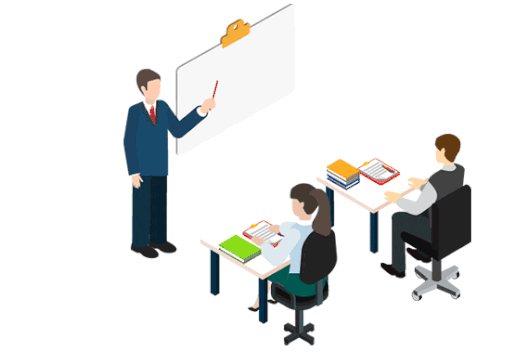Last updated on December 9th, 2022 at 09:21 am
What is expected at the end of any corporate training? Improved skills and productivity, greater retention rates and an improved brand should be the end result of any corporate training. It is vital to measure whether the training has a positive or negative impact on the learning and development of the participants. The training involves a significant investment in terms of time and money.
To evaluate the effectiveness of corporate training the technique that is to be used is known as Training Effectiveness measurement. To evaluate the effectiveness of the training, it is essential to evaluate Why Who and What is trained.
Earlier the learning was measured based on multiple-choice questions. Such measurement of learning was focused on short-term retention of knowledge. Also, there was no long term ability to apply this knowledge. Hence, the goal of the training should not only be to look after the return of investment but also to improve the skills of the participants.
The effectiveness of the training can be measured by evaluating the effectiveness of the training in helping learners to gain relevant knowledge and skills. In addition to this, by measuring how well could participants apply the learned information at work and last but not the least by listing down the other benefits of the training.
During the 1950s, the University of Wisconsin Professor Donald Kirkpatrick developed the Kirkpatrick Evaluation Model for evaluating training. This model includes a simple, 4 level approach that helps to measure the effectiveness of corporate training. The four levels are:
- Reaction
- Learning
- Behaviour, and
- Results
Level 1: Reaction
This level measures how participants react to the training, the relevance, the importance, usefulness as well as of the convenience of the preparation of the training. How to measure the participants’ reactions? It is possible to do measure their reaction by using surveys, questionnaires or talking to them before and after the training. The trainer can incorporate this to collect their feedback on the learning experience.
By asking questions on the relevance of course content, learning as well as key takeaways, strengths, and weaknesses of the training, accommodation of the participants’ pace and learning style by the trainer. Measuring the effectiveness of the training at this level can help the trainers to look for any gaps present in the content.
Level 2: Learning
At this level, measuring the knowledge and skills gained by participants as a result of the training help to test the effectiveness of the training. At this stage of evaluation, you can determine whether the training has met its set objectives. What are the specific skills that can be developed and the scope for improvements in terms of content and method of delivery can also be identified. These can be done by giving the participants assessment of connected learning ventures.
Level 3: Behaviour
It is essential to understand how the training has impacted the participants’ performance and their attitude at work. This can be evaluated by measuring the impact of training on their performance and delivery at work. It is possible to evaluate these by using the self-assessment questionnaire, informal feedback from peers and managers, on-the-job observation, customer surveys, etc. When you assess participants, you must include questions on how are they implementing their learning at work and also whether they are confident enough to share their new skills and knowledge with their peers.
Level 4: Results
At this level, it is possible to measure the tangible results of the training that include reduced cost, improved quality, faster project completion, increased productivity, employee retention, better marketing leads, increased sales, and higher morale. How can you say the training is effective? If the outcomes include increased employee retention, increased production, higher morale of the employees or improved business results, then the training is said to be effective.
So, what is the conclusion? Corporate training plays an important role in improving the learning and development of employees. This also influences the overall performance of the organization. To improve the learning and development of the employees, it is essential to understand the roadblock in the training which is offered to the employees.
Apart from these, you can also consider skill assessment as one of the most essential ways of measuring the effectiveness of the training. Evaluate how an employee carries out a certain task before the training and then reevaluating the same employee after training and then giving him/her the same task. This helps to establish what the employees have truly gained from the training. You can also measure whether the employees have developed any new skills or improved their skills.

